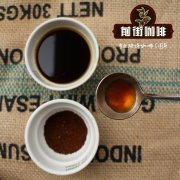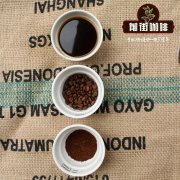Do you know what kind of Peruvian coffee beans are? | which Peruvian coffee brands are better?

Professional coffee knowledge exchange more coffee bean information please follow the coffee workshop (Wechat official account cafe_style)
Peru is located in western South America, bordering the South Pacific Ocean, between Chile and Ecuador. Peru has a very diverse climate, from the tropics in the east to the dry deserts in the west, and from the temperate zone to the cold of the Andes. Different climates are closely linked to the main geographical areas of Peru, including the western coastal plains, the central Andes, and the lowland jungles of the eastern Amazon basin.
Peruvian coffee fields are mainly distributed in the areas of Cacumaca in the north, Cusco and Norp in the south. 70% of the coffee varieties are iron pickups, 20% are Kaddura, and the rest are Kadim and other varieties. About 75 per cent of coffee growing areas are located at elevations of 1-1800 metres above sea level, while 2000 plants per hectare are grown in shady areas. Agriculture is mainly done by small farmers, and the planting area of organic coffee is 90,000 hectares.
Peru, as the eighth largest coffee producer in the world, has found great business opportunities for organic coffee in Europe and the United States in the past decade, while coffee fields in the Peruvian mountains have no running water and electricity, and poor Indian farmers have been accustomed to organic cultivation since ancient times. up to now, they still cannot afford to buy or use pesticides and fertilizers. The authorities are taking advantage of the opportunity to develop the organic coffee industry, which is mentored and certified by the Government. If they meet the requirements, organic certificates will be issued to facilitate export.
Peruvian organic coffee has low production costs, making it the world's largest and cheapest exporter of organic coffee. The other two major organic coffee producers are Mexico and Ethiopia, but at higher prices. The authorities intend to develop Peru into the world's leading organic coffee country, just as Vietnam is the world's largest producer of Robusta, but the floor price strategy has caused resentment in many producing countries.
Although Peru dumps organic coffee at a low price, this does not mean that boutique coffee is extinct. In the 2010 SCAA Coffee of the year cup test, the tin card produced by Cecovasa in Tunkimayo, a small town in Puno, southeastern Peru, narrowly beat the rosy summer of the famous Panamanian emerald estate with a high score of 89.2, winning fifth place.
Peruvian coffee beans are best known for their coffee beans from Chimacha Mayou in the middle and Cusco in the south. In addition, some areas in northern Peru also produce characteristic organic coffee. Organic coffee is made of beans grown in the shade of trees. Although the yield of coffee beans is not high because of the method of planting in the shade, its quality can reach the level of gourmet coffee.
Shading trees can slow down the ripening of coffee trees, help coffee grow fully, make it contain more natural ingredients, breed better flavors, and reduce caffeine content.
END
Important Notice :
前街咖啡 FrontStreet Coffee has moved to new addredd:
FrontStreet Coffee Address: 315,Donghua East Road,GuangZhou
Tel:020 38364473
- Prev

What's the name of the best Peruvian coffee? what's the flavor of Peruvian coffee?
Professional coffee knowledge exchange more coffee bean information please pay attention to the coffee workshop (Wechat official account cafe_style) Peruvian coffee also has an important position in the world, some Peruvian beans are also quite amazing. However, a few days ago, Reuters reported that the country's main coffee association had previously said that Peruvian coffee producers were abandoning their farms and planting them instead.
- Next

Does India produce coffee? what is the origin of Indian coffee beans? what are the flavor and characteristics?
Professional coffee knowledge exchange more coffee bean information Please pay attention to the coffee workshop (Wechat official account cafe_style) in fact, India is rich in coffee beans, about 250000 people in the country grow this economic product, coffee is suitable for growing in a warm environment, between the Tropic of Cancer is called the coffee belt (coffee zone), but for fear of high temperature destroying the characteristics of beans, it is mostly planted in
Related
- Beginners will see the "Coffee pull flower" guide!
- What is the difference between ice blog purified milk and ordinary milk coffee?
- Why is the Philippines the largest producer of crops in Liberia?
- For coffee extraction, should the fine powder be retained?
- How does extracted espresso fill pressed powder? How much strength does it take to press the powder?
- How to make jasmine cold extract coffee? Is the jasmine + latte good?
- Will this little toy really make the coffee taste better? How does Lily Drip affect coffee extraction?
- Will the action of slapping the filter cup also affect coffee extraction?
- What's the difference between powder-to-water ratio and powder-to-liquid ratio?
- What is the Ethiopian local species? What does it have to do with Heirloom native species?

